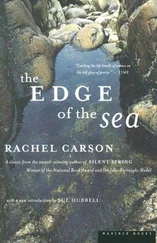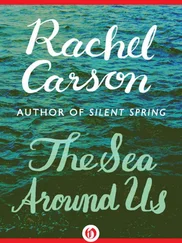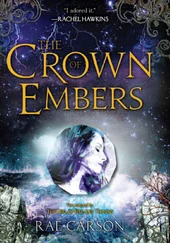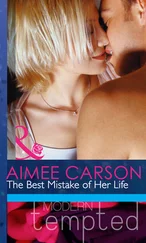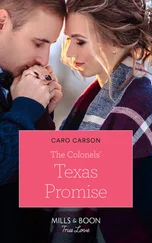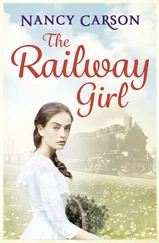Your brief letter, sent from Paris ten days later, only served to confirm my suspicions. You had left MO2, you said, you could not bear to live with it any longer, you had taken up a new life in Paris, you hoped that I was well, and that I would forgive you for what you had done, but it was all over between you and me, you could not bear the pain of looking me in the eye again. Words to that effect. Later that day, 9th July 1984, I learned that York Minster had been struck by lightning, and its South Transept razed by the subsequent fire. And in the days that followed, I heard how the four-hundred-year-old stained glass of the great Rose Window, made to commemorate the defeat of the House of York in the Wars of the Roses, had been riven into some forty thousand fragments, though the panels had miraculously stayed intact within their embrasures, having been releaded some years previously; and in the months that followed, I heard how restoration began, as adhesive plastic film was applied to the crazed mosaic of the glass panels, which were then removed one by one, disassembled, and reassembled, tessera by tessera, using a specially developed fixative which had the same refractive index as the old glass, whereupon the completed work was sandwiched between two layers of clear glass for added security, and mounted back in place: which intervention means we will never again see what was seen before the fire, the dims and glows of stained glass unmitigated by an added medium, however clear. And I remembered how we two had once seen the glass as it was, as it had been.
As I cast my mind back now, Nina, I no longer know the truth of what we were together, or what you were to me. I look at your last postcard again. HAVE YOU FORGOTTEN ME , the stamp says, or it might say nothing. I trace the N of your name with my finger, and, as I put my hand to my face, I seem to catch a whisper of some perfume. What is it, Nina, Je Reviens , or Vol de Nuit ? But it escapes me, I can find no name for it, and I do not know what message your next card will bring.
Dear Gabriel, you wrote. I had looked at your letter for some time before I opened it. The stamp bore a Belfast postmark, and I was filled with hope and trepidation because we now breathed the air of the same city, or had done yesterday at least. My name and address was in blue ink, the colour of eternity, but also of death, and I thought of the blue vein in your wrist, how you would often raise it to my face for me to smell whatever perfume you were wearing. Eventually, with trembling hands, I took a knife and slit open the thick cartridge-paper envelope. A postcard fell out; I would look at it later. For now, I was more concerned with your many words.
It’s been a long time, you wrote, and I hardly know where to begin. But when I wrote those words on the first postcard I sent you, I remembered how you used to sing that Rolling Stones song, ‘Long Long While’. You remember?
Baby, baby, been a long, long timeBeen a long, long time, been a long, long timeI was wrong girl and you were right.
It was the B side of ‘Paint It Black’, 1966, you said, you liked it better than the A side because it had less pretensions about it. Very simple lyrics, but Jagger sings them with real emotion, you loved that little off-key catch in his voice, you said. I hadn’t realised then that you were such a Rolling Stones freak, and you would say you weren’t, it was just if you had a choice between the Beatles and the Stones, you’d go for the Stones any day. More edge. But I knew you liked Mick’s style in general, and, despite your protestations, I think you were fascinated by that English middle-class bad boy thing, you liked the fact that he read books as well as listening to the blues, and you liked the clothes. Not that you dressed like Mick Jagger, but you had just a little touch of flamboyance. That first time I saw you in the xl Café, the first thing I noticed, beyond your face, was the tie you were wearing, looked like a Forties tie, pale grey with a washed-out pink diamond pattern, went nicely with the Donegal tweed jacket. I think maybe I fell in love with you a little just then, because it seemed that you wore the clothes almost at a distance from yourself, you didn’t seem to be a natural dresser, it was something more considered, as if you had a picture in your head of how you should look, or how you might look to others. And, as I got to know you, I thought it was a little bit like how you looked at paintings, admiring but not fully entering them, and I liked that hesitancy in you, the way you adjusted your tie as I looked at you from the corner of my eye.
Anyway, it’s been a long, long time, and you’ll want to know why I started this whole thing, this correspondence. And I hardly know myself. But it must have started with the cards, I’d buy postcards in whatever place I’d be, not to send to anyone, but as mementoes, or just because I liked the pictures. I stored them in a shoebox, a men’s shoebox, Church’s brogues, you could still smell the leather off the cardboard. Years of postcards. And I was flicking through them one day when I saw that one I began with, the Empire State Building struck by lightning, I couldn’t even remember where I bought it, but it reminded me of us in New York, you remember, how excited we were, lightning flickering above the skyline of the city, us laughing in the downpour. We’d taken shelter in one of those dives off Bleecker Street, you remember, it was like something from the 1940s, there was a black girl doing Billie Holiday numbers, standing on a little raised platform under a spotlight, and those little tea-lights in faceted glass holders on the tables, you could see hands and cigarettes and cocktail glasses, a face or two, and the smoke drifting up into the spotlight. And she was really good, she sang the songs with respect, but she put her own heart and soul into them too, and when I glanced at you over the tea-lights I could see that there were tears in your eyes, and then tears came to my eyes too.
So when I saw the lightning in New York postcard, I thought of you, and of our time there, and thought it might have been possible that you’d been in my mind when I bought it, however subliminally. And then I started going through the shoebox again and I began to find a pattern, this card or that would remind me of this or that time we’d spent together. So many memories began to well up. Like Colette when Lee Miller met her, you know, going through her photographs. And I could have chosen others, too, besides the ones I ended up with. There’s a lovely 1950s 3-D one of the Chrysler Building, all metallic greens and silvery blues, and I remembered how you’d talked about its automotive architecture, it had never occurred to me that the Chrysler Building had anything to do with cars, and you said, Well, that’s one for your little red book, Nina, you’re always looking for these little style details, maybe you could do something with that, and I said, Yes, it’s like the way those big American cars with the big bench seats were made for the dresses, the big flared skirts and petticoats, and I wrote down ‘Chrysler Building haute couture’ with my Dinkie pen that first brought us together, you remember …
Dear Nina, how could I forget? I’d been looking for a match for that pen ever since it occurred to me to begin collecting. And I found it just last week, or perhaps it found me. I’d had a couple of long-standing requests in with Beringer, you remember Beringer, his shop in Winetavern Street? One of them was for the Dinkie, the other for a Parker Royal Challenger, 1939, I’d just missed one on eBay, and the more I’d looked at its photograph, the more I wanted one, I loved the Art Deco stepped clip, very Chrysler. So I called in with Beringer on the off-chance. Ah, Mr Gabriel, he said, the Royal Challenger, he said, and he took the pen from his breast pocket and handed it to me, barrel first. It was indeed lovely, brown pearl bodywork with a black chevron pattern that matched the clip, it’s another take on the Parker arrow emblem. How much do I owe you? I said, and he named a price, I named a lower price, he came down a little, I came up a little, and so on, till we met halfway, as we knew we would. Ah, you drive a hard bargain, Mr Gabriel, he said, but I’ll tell you what, just to show there’s no hard feelings, here’s a little luckpenny, and he shot his cuffs, held open his two hands before me, made fists of them, and said, Pick a hand. I looked at him somewhat sceptically, and touched his left hand, and when he opened it, lying on his palm was the twin of your Dinkie. Of course it wouldn’t be an identical twin, Conway Stewart never made two of these black and red mottled rubber models alike, but as it looked as near to yours as I could remember, I was delighted.
Читать дальше


